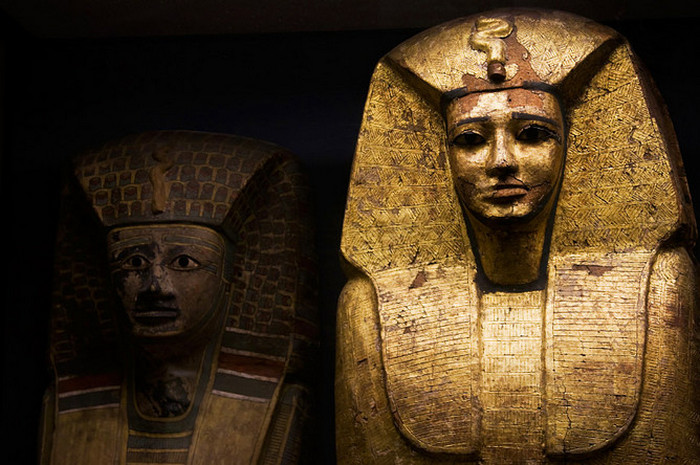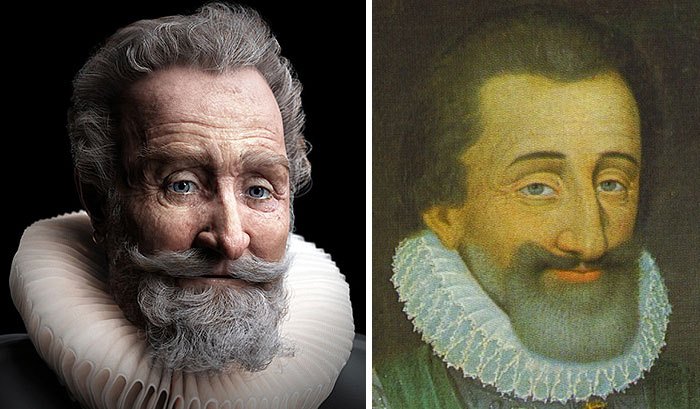carefully studied
The mystery of the Roman Lycurgus Cup: Nanotechnology in the ancient world?
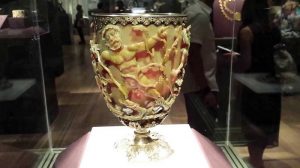 The British Museum holds a very beautiful ancient exhibit – the Roman Lycurgus Cup. But he is more famous for his unusual optical properties. Under normal lighting, the goblet appears yellowish-green, and in transmitted light it acquires a deep wine-red hue. Only in 1990, scientists were able to reveal the secret of these unique properties, but how could such an effect be achieved in ancient times? After all, these are the real nanotechnologies …
The British Museum holds a very beautiful ancient exhibit – the Roman Lycurgus Cup. But he is more famous for his unusual optical properties. Under normal lighting, the goblet appears yellowish-green, and in transmitted light it acquires a deep wine-red hue. Only in 1990, scientists were able to reveal the secret of these unique properties, but how could such an effect be achieved in ancient times? After all, these are the real nanotechnologies …
The cup is a so-called diatret – a double-walled bell covered with a figured pattern. Its height is 16.5, and its diameter is 13.2 centimeters.
The earliest found diatrets belong to the 1st century BC. n e., and their heyday reached its production in the III and IV centuries. Diatrets in that era were considered very expensive items and were available only to the rich. Continue reading
Who was the legendary Troyan from “The Tale of Igor’s Campaign”: A long way to the East and back to the West
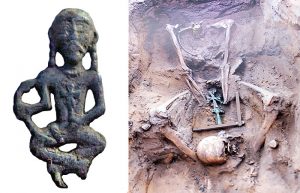 The story that will be discussed on these pages began with a find of an unusual item on the territory of Ukraine. It was a figure of a person sitting cross-legged (we call this position “Turkish”) a person holding a snake in his right hand that stings him in the shoulder, in the left person holds a cross with blades widening towards the ends. Unfortunately, the first find, which became known to the author, suffered from a significant drawback; the figurine lacked a head.
The story that will be discussed on these pages began with a find of an unusual item on the territory of Ukraine. It was a figure of a person sitting cross-legged (we call this position “Turkish”) a person holding a snake in his right hand that stings him in the shoulder, in the left person holds a cross with blades widening towards the ends. Unfortunately, the first find, which became known to the author, suffered from a significant drawback; the figurine lacked a head.
An unusual find caused a lot of questions and the main one – who was depicted by an ancient master with such unusual symbols? An ornament resembling beads around a neck of a figure (possibly a hryvnia, a symbol of high status in society), crossed legs of a low-sitting figure, all evoked in memory a similar figure from the pantheon of gods of ancient Celts, Cernunnos (or Cernunns), (Horned).
An excellent image of this god is known on the chased bas-relief of a silver cauldron. Continue reading
Archaeologists have discovered the skeleton of a man who used a knife instead of a prosthetic arm
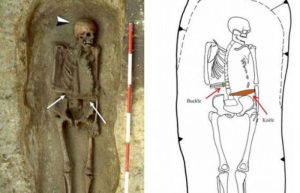 Who among us does not remember the formidable captain Hook, the inveterate enemy of Peter Pan? Literature and cinema is replete with characters whose distinctive detail was the presence of such an unusual prosthesis. But more recently, Italian archaeologists discovered an amazing find. They found the skeleton of a man who, apparently, used a knife to replace an amputated hand.
Who among us does not remember the formidable captain Hook, the inveterate enemy of Peter Pan? Literature and cinema is replete with characters whose distinctive detail was the presence of such an unusual prosthesis. But more recently, Italian archaeologists discovered an amazing find. They found the skeleton of a man who, apparently, used a knife to replace an amputated hand.
It is difficult to believe in the authenticity of such a find: an analysis of the bones of the skeleton suggested that this person lived in the 6th – 8th centuries. There is no need to speak about any professional medicine or even about the observance of basic sanitary standards during this period. Continue reading

